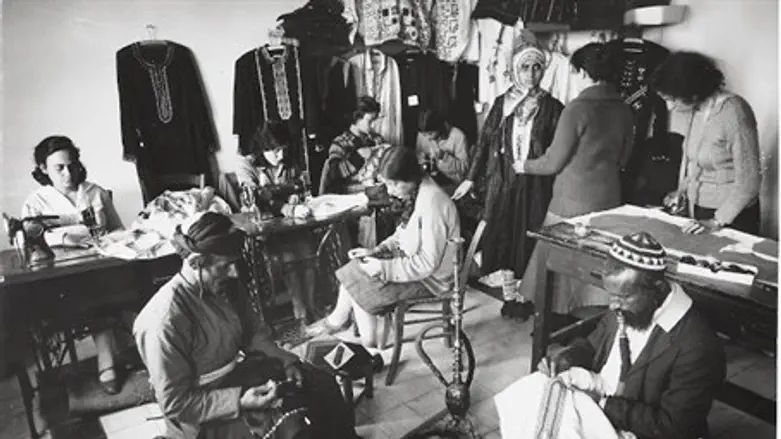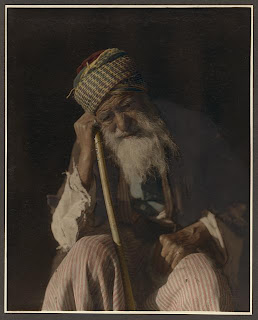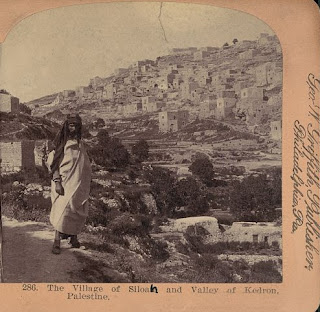
Fifty thousand Yemenite Jews were secretly airlifted to the new state of Israel in 1949-1950 in order to escape anti-Jewish pogroms that were erupting across the Arab world.
The emergency campaign, called Operation Magic Carpet or Operation On Eagles' Wings, would be repeated decades later to rescue Ethiopian Jewry in the 1984 Operation Moses and the 1991 Operation Solomon when Israel flew thousands of Jews out of Ethiopia and Sudan then plagued by famine and civil war.
Neither the Yemenites nor the Ethiopians were motivated by modern political Zionism as founded by Theodore Herzl. They were fervent believers in the ancient Jewish messianic dream of returning to the Land of Israel. From Gondar in northern Ethiopia and the ancient mountain town of Sana'a in Yemen they were determined to reach Eretz Yisrael.
 |
| "Arab Jew from Yemen" (Library of Congress) |
 |
| Yemenite Jew probably from Haban (Library of Congress) |
In fact, there was a Yemenite aliyah that preceded the airlift by over half a century. A significant group of Yemenite Jews arrived in Jerusalem in 1882, of their own motivation, travelling by foot without any outside help. They called their journey "Aaleh batamar", a phrase from the Song of Songs that includes the root of the word aliyah, and their story and photographs appear here and here. Many were fed and sheltered by the members of the American Colony of Jerusalem.
Many of these olim lived in homes in the Shiloach (Silwan) neighborhood of Jerusalem,near the City of David. This settlement was called Kfar Hashiloach or the Yemenite Village. Construction costs were kept low by using the Shiloach pool as a water source instead of digging cisterns. An early 20th century travel guide writes: In the “village of Silwan, east of Kidron (the steep-walled valley bordering the City of David, ed.) … some of the fellah dwellings [are] old sepulchers hewn in the rocks. During late years a great extension of the village southward has sprung up, owing to the settlement here of a colony of poor Jews from Yemen."
The Jews were forced to leave by the British due to Arab rioting in 1938 and in the 1948 War of Independence, Kfar Hashiloach was conquered by Jordan, which allowed Arabs to take over the homes and build new ones in the once Jewish village. The courageous Jews who have returned to that area since 1967 live in the property owned by the Yemenites.
The picture on the main page of the Yemenite embroidery and tailor shop from Otti Seidon's Cigarbox Collection was taken between the two immigrations, but well before the large airlift of Yemenite Jews. These are the children of the 1882 olim. Note the men, including the hookah smoker, working on the embroidery which is not unlike the silver and gold filigree for which Yemenite Jewish jewelers were famous.
In the 1950s and 60s, after the fledgling state of Israel brought over the airlife from Yemen, cottage industries were set up for Yemenite embroiderers, and their wares were sold by Ruth Dayan's Maskit fashion house, WIZO's women's organization, and a legendary Jerusalem shopkeeper named Esther Zeitz who employed young blind women to embroider.
More historical pictures and essays at www.israeldailypicture.com “